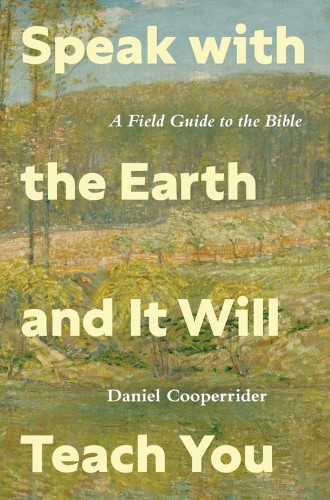Reading scripture through the lens of nature
Daniel Cooperrider understands the Bible as an outdoor book, open to the sky.
Several years ago, I started walking three miles each morning with my English lab, no matter the weather. There is something good about closing the gap between oneself and the environment—getting soaked by the rain, feeling winter’s cold embrace, breathing the humid air of a midsummer morning.
In Speak with the Earth and It Will Teach You, Daniel Cooperrider closes the gap between God’s two books, the book of the Bible and the book of nature. Like Wendell Berry before him, Cooperrider understands the Bible as an outdoor book, open to the sky.
Read our latest issue or browse back issues.
Cooperrider’s book bears the mark of the landscape of Vermont “with its blazing maples, dark green moss and fern-floored mountains, cold trout streams, big east-west skies, and fertile valleys,” the bulk of it having been written while Cooperrider was pastor of Weybridge Congregational Church. Educated in the ancient and venerable tradition of searching for God and meaning in the written word, Cooperrider learned from his Vermont congregation another way of reading for God and meaning: in the landscape and the events of the earth. “They taught me that the church was not just a place to read and interpret the written scriptures of God, but a place to read and interpret the expressions of God that emanate constantly and from every corner of God’s creation.”
Cooperrider traces the two-books formulation from the Reformation, back through the medieval mystics and theologians, and to its origins with Augustine, who wrote about the “great book” that consists of “the very appearance of created things.” While Luther and Calvin embraced the two-books formulation at the outset of the Reformation, Cooperrider notes, they soon began to distance their theologies from it. Over the course of the next several centuries in Western thought, the two books parted company as theologians tended “to focus more and more on the book of scripture and less and less on the book of nature.” Relegating the interpretation of the sacred to the book of scripture, Cooperrider argues, “has resulted in widespread disregard for nature’s diverse otherness,” leading to the “climate chaos and mass species extinction” of today.
Cooperrider aims not to read the book of nature through the lens of scripture but rather to read scripture through the lens of nature, “to focus on creation and the more-than-human drama of life as it presents itself in its elemental forms.” He does so in four major sections that reflect the four classical elements (water, fire, earth, and air) and that correspond to four prominent aspects of nature that hold powerful sway in the stories of scripture: rivers, mountains, trees, and clouds.
The result is a series of reflections, almost parabolic in nature, that are deeply informed by the environment and theology. I came away with an appreciation of what the clouds teach of the impermanence of life as well as a new perspective on the cloud of witnesses referenced in the letter to the Hebrews. I learned how socially interconnected trees are, which caused me to think about the value of social safety nets that privilege the well-being of the whole over the self-interest of one. In a section on thinking like a mountain, Cooperrider reframes being a disciple of Jesus as being a climbing companion of the one who reveals to us the wisdom of earth and the revelation of heaven. From rivers, Cooperrider suggests we can learn “how God’s energy, God’s love, God’s mercy flows down and floods every tiny little crack and corner of creation.”
Cooperrider’s writing is evocative, poetic, and accessible. He expresses a reverence for the natural world and the God who created it, inviting us to love God through loving the world. Returning to the climate crisis at the end of the book, Cooperrider suggests it reflects a misplaced longing and a disordered love. “We seem to be in love with something other than the earth and its flourishing,” he writes. “If we discover or rediscover a boundless love for the earth, it will be for our species, as it has been said, like discovering fire for the second time.”
Speak with the Earth and It Will Teach You is a welcome invitation to reorder our love toward the world God loves, to love the earth and its flourishing, to go for a walk in the rain even when we don’t have to.







